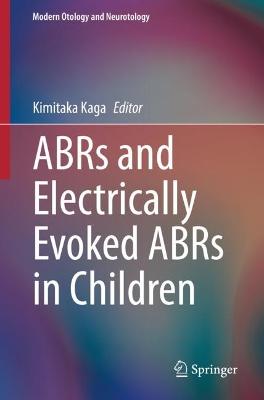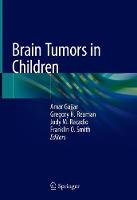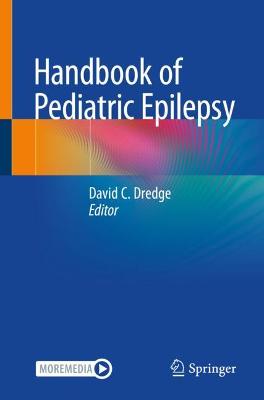Textbook of Pediatric Neurosurgery
 -15%
portes grátis
-15%
portes grátis
Textbook of Pediatric Neurosurgery
Rutka, James T.; Di Rocco, Concezio; Pang, Dachling
Springer International Publishing AG
07/2020
3077
Dura
Inglês
9783319721675
15 a 20 dias
7706
Descrição não disponível.
1.Generalities: Embryology of CNS.- Neurologic development and objective neurological examination of the infant and the child.- Principles of neuroimaging.- Neurologic development and objective neurological examination of the infant and the child.- Physiological responses of the newborn, infant and child to neurosurgical trauma.- Preoperative evaluation, anesthesiological and intensive care management.- Pediatric chemotherapy.- Pediatric radiotherapy.- 2. Congenital brain malformation and acquired disorders: Encephaloceles, meningoceles, dermal sinuses.- Chiari malformations (types II,III,IV) .- Craniopagus.- Physiology and abnormalities of CSF dynamics (including infantile benign hydrocephalus and benign intracranial hypertension) .- Hydrocephalus: Clinical presentation according to age and etiology.-Pathological changes induced by the hydrocephalus/ compensative changes.-Hydrocephalus: Neuroimaging.- Fetal hydrocephalus and its treatment inutero.-Posthemorrhagic hydrocephalus.-Postinfective hydrocephalus.- Multiloculated hydrocephalus.-Aqueductal stenosis and hydrcephalus.-X-linked, metabolic hydrocephalus.- Hydrocephalus associated to MM.- Hydrocephalus associated to tumors.- Medical treatment of hydrocephalus.- Surgical treatment of hydrocephalus based on CSF shunt devices.-In-depth view: Functional chracteristics of CSF shunt devices (pros and cons) .- In-depth view: How to perform a V-P CSF shunt.- In-depth view: How to perform a V-A CSF shunt.- In-depth view: How to perform a lumbo-peritoneal CSF shunt.- In-depth view: How to perform a pleural, glad bladder shunt.-In-depth view: How to perform a subgaleal shunt.- In-depth view: External CSF shunts.-Infective, mechanical and functional complications in the surgical treatment of hydrocephalus.- Late complications following surgical treatment of hydrocephalus.-Endoscopic treatment of hydrocephalus.-In-depth view: How to perform an endoscopic third-ventricle cisternostomy.- In-depth view: How to perform an endoscopic plexectomy.-Complications following endoscopic treatment of hydrocephalus.-Arachnoid cysts.-Dandy-Walker malformations/variants.- Cortical dysplasia.- Neurocutaneous syndromes.-Neurofibromatosis.-SturgeWeber.-Tuberous sclerosis.- HippelLindau.-Hemimegalencephaly.-Cerebrocutaneous melanosis.- .Encephalo cutaneous lipomatosis.- 3. Cerebrovascular diseases: Vein of Galen aneurysmal malformations.-Artero-venous malformations.-Venous angiomas and cavernomas.- Cerebral aneurysms.-Moya-moya disease.- 4. Congenital malformations of the skull and its coverings: Craniosynostoses: Management Issues and Evolution in concepts.- Craniosynostoses: Genetic base, genes, chromosomes and resulting syndromes.- Craniosynostoses: Lessons learned from animal models.- Sagittal synostoses.- Coronal (uni and bilateral) synostoses.-Metopic synostoses.- Lambdoid synostoses.-Non syndromic plurisutural synostoses (oxycephaly, Mercedes) .- Syndromic synostoses.-Secondary synostoses (Metabolic, Iatrogenic, osteopetrosis, etc) .- In-depth view: ICP in craniosynostosis.- In-depth view: Neuropsychological evaluation in craniosynostosis.-In-depth view: Psycho-Sociological repercussions of craniosynostosis.- In-depth view: Deformational plagiocephaly.- In-depth view: Management of craniosynostosis: Evaluation of results.- In-depth view: Blood sparing and anesthesiological issues in craniosynostosis.- In-depth view: Osteogenic distraction.-In-depth view: Endoscopy assisted techniques.- In-depth view: Spring assisted distraction.-In-depth view: Bone splitting and materials.-Scalp agenesis. .- 5. Head Injuries: Birth related head traumas.- Accidental head traumas.-Non-accidental head injuries.-Cranial decompression.- Outcomes, principles of rehabilitation.-6. Infections: Meningitis: neurosurgical implications.- .Encephalitis.- Empyemas and brain abscesses.-Parasitic infestations, fungal and TB.- 7. Neoplasms: Genetic basis and classification of cerebral neoplasms.- Familial syndromes.-Congenital and infantile tumors.-Cerebral gliomas.-Thalamic gliomas.-Optic pathways gliomas.- Pituitary adenomas.-Craniopharyngiomas and Rathke cysts.- Pineal region tumors.- Brainstem tumors.- Cerebellar astrocytomas.-Medulloblastomas.- Ependymomas.- Meningiomas.- Skull base tumors.-Skull tumors.- .-8. Functional disorders: Epilepsy: genetic forms and sporadic forms.-Medical intractable epilepsy: preoperative evaluation.-Catastrophic epilepsy and hemispherectomy.-Temporal lobe epilepsy surgery.- Extra-temporal epilepsy surgery.- Palliative surgical techniques (VNS, Callosotomy) .- Neuromodulation.- Spasticity.- Movement disorders.-9. Congenital and developmental spinal disorders: Genetic basis of neural tube defects.- Classification of spinal dysraphic malformations according to embryogenesis: Gastrulation defects and Split cord malformation.- Primary neurulation defects: 1 Open neural tube defects.- Primary neurulation defects : 2 Limited dorsal myeloschisi (LDM) .Dermoid and dermal sinus tracts.-Secondary neurulation defects -1: Thickened filum terminale; Retained medullary cord.-Secondary neurulation defects -2: Terminal myelocystocoele.-Mixed primary and secondary neurulation defects: spinal cord lipomas.- Antenatal management of spinal dysraphysm-1: Imaging and diagnosis of antenatal spinal and spinal cord malformations.-Antenatal management of spinal dysraphysm-2: Antenatal surgery of myelominingocoele.-Caudal agenesis and associated spinal cord malformations.-Spinal cord and vertebral arteriovenous malformation and fistula.-Intraspinal cysts including syringomyelia unrelated to Chiari Malformation.- Scoliosis and other congenital vertebral anomalies. 10. Craniovertebral Junction Anomalies: Embryology, classification, and surgical management of bony malformations of the craniovertebral junction.-Chiari I Malformation and associated syringomyelia.- Anterior surgical approaches to the craniovertebral junction and upper cervical spine. 11. Spine and spinal cord neoplasms: Intramedullary tumours.- Extramedullary tumours.- Vertebral tumours. 12. Spinal trauma: Spine and spinal cord injuries in children: General aspects including Pure ligamentous injuries in children.- Spinal cord injury without radiographic abnormality (SCIWORA) .- Atlantooccipital dislocation (AOD) in children.- Atlantoaxial rotatory fixation (AARF) in children.-Outcome and principles of spinal cord rehabilitation in children. 13. Infectious diseases of the spine: Tuberculosis of the spine.- Bacterial, fungal, and other non-tuberculous infections of the spine, including intraspinal abscesses.- Juvenile disc diseases of the spine including infectious and non-infectious acute discitis.- 14. Intraoperative Neurophysiology Monitoring: Intraoperative neurophysiology monitoring for surgery of the brain.- Intraoperative neurophysiology monitoring for surgery of the spine and spinal cord.
Este título pertence ao(s) assunto(s) indicados(s). Para ver outros títulos clique no assunto desejado.
CNS infections;Neuroembryology;cerebral vascular malformations;craniofacial anomalies;disorders of the developing brain;dysraphism;epilepsy;hydrocephalus;neuro-oncology;trauma;surgical oncology
1.Generalities: Embryology of CNS.- Neurologic development and objective neurological examination of the infant and the child.- Principles of neuroimaging.- Neurologic development and objective neurological examination of the infant and the child.- Physiological responses of the newborn, infant and child to neurosurgical trauma.- Preoperative evaluation, anesthesiological and intensive care management.- Pediatric chemotherapy.- Pediatric radiotherapy.- 2. Congenital brain malformation and acquired disorders: Encephaloceles, meningoceles, dermal sinuses.- Chiari malformations (types II,III,IV) .- Craniopagus.- Physiology and abnormalities of CSF dynamics (including infantile benign hydrocephalus and benign intracranial hypertension) .- Hydrocephalus: Clinical presentation according to age and etiology.-Pathological changes induced by the hydrocephalus/ compensative changes.-Hydrocephalus: Neuroimaging.- Fetal hydrocephalus and its treatment inutero.-Posthemorrhagic hydrocephalus.-Postinfective hydrocephalus.- Multiloculated hydrocephalus.-Aqueductal stenosis and hydrcephalus.-X-linked, metabolic hydrocephalus.- Hydrocephalus associated to MM.- Hydrocephalus associated to tumors.- Medical treatment of hydrocephalus.- Surgical treatment of hydrocephalus based on CSF shunt devices.-In-depth view: Functional chracteristics of CSF shunt devices (pros and cons) .- In-depth view: How to perform a V-P CSF shunt.- In-depth view: How to perform a V-A CSF shunt.- In-depth view: How to perform a lumbo-peritoneal CSF shunt.- In-depth view: How to perform a pleural, glad bladder shunt.-In-depth view: How to perform a subgaleal shunt.- In-depth view: External CSF shunts.-Infective, mechanical and functional complications in the surgical treatment of hydrocephalus.- Late complications following surgical treatment of hydrocephalus.-Endoscopic treatment of hydrocephalus.-In-depth view: How to perform an endoscopic third-ventricle cisternostomy.- In-depth view: How to perform an endoscopic plexectomy.-Complications following endoscopic treatment of hydrocephalus.-Arachnoid cysts.-Dandy-Walker malformations/variants.- Cortical dysplasia.- Neurocutaneous syndromes.-Neurofibromatosis.-SturgeWeber.-Tuberous sclerosis.- HippelLindau.-Hemimegalencephaly.-Cerebrocutaneous melanosis.- .Encephalo cutaneous lipomatosis.- 3. Cerebrovascular diseases: Vein of Galen aneurysmal malformations.-Artero-venous malformations.-Venous angiomas and cavernomas.- Cerebral aneurysms.-Moya-moya disease.- 4. Congenital malformations of the skull and its coverings: Craniosynostoses: Management Issues and Evolution in concepts.- Craniosynostoses: Genetic base, genes, chromosomes and resulting syndromes.- Craniosynostoses: Lessons learned from animal models.- Sagittal synostoses.- Coronal (uni and bilateral) synostoses.-Metopic synostoses.- Lambdoid synostoses.-Non syndromic plurisutural synostoses (oxycephaly, Mercedes) .- Syndromic synostoses.-Secondary synostoses (Metabolic, Iatrogenic, osteopetrosis, etc) .- In-depth view: ICP in craniosynostosis.- In-depth view: Neuropsychological evaluation in craniosynostosis.-In-depth view: Psycho-Sociological repercussions of craniosynostosis.- In-depth view: Deformational plagiocephaly.- In-depth view: Management of craniosynostosis: Evaluation of results.- In-depth view: Blood sparing and anesthesiological issues in craniosynostosis.- In-depth view: Osteogenic distraction.-In-depth view: Endoscopy assisted techniques.- In-depth view: Spring assisted distraction.-In-depth view: Bone splitting and materials.-Scalp agenesis. .- 5. Head Injuries: Birth related head traumas.- Accidental head traumas.-Non-accidental head injuries.-Cranial decompression.- Outcomes, principles of rehabilitation.-6. Infections: Meningitis: neurosurgical implications.- .Encephalitis.- Empyemas and brain abscesses.-Parasitic infestations, fungal and TB.- 7. Neoplasms: Genetic basis and classification of cerebral neoplasms.- Familial syndromes.-Congenital and infantile tumors.-Cerebral gliomas.-Thalamic gliomas.-Optic pathways gliomas.- Pituitary adenomas.-Craniopharyngiomas and Rathke cysts.- Pineal region tumors.- Brainstem tumors.- Cerebellar astrocytomas.-Medulloblastomas.- Ependymomas.- Meningiomas.- Skull base tumors.-Skull tumors.- .-8. Functional disorders: Epilepsy: genetic forms and sporadic forms.-Medical intractable epilepsy: preoperative evaluation.-Catastrophic epilepsy and hemispherectomy.-Temporal lobe epilepsy surgery.- Extra-temporal epilepsy surgery.- Palliative surgical techniques (VNS, Callosotomy) .- Neuromodulation.- Spasticity.- Movement disorders.-9. Congenital and developmental spinal disorders: Genetic basis of neural tube defects.- Classification of spinal dysraphic malformations according to embryogenesis: Gastrulation defects and Split cord malformation.- Primary neurulation defects: 1 Open neural tube defects.- Primary neurulation defects : 2 Limited dorsal myeloschisi (LDM) .Dermoid and dermal sinus tracts.-Secondary neurulation defects -1: Thickened filum terminale; Retained medullary cord.-Secondary neurulation defects -2: Terminal myelocystocoele.-Mixed primary and secondary neurulation defects: spinal cord lipomas.- Antenatal management of spinal dysraphysm-1: Imaging and diagnosis of antenatal spinal and spinal cord malformations.-Antenatal management of spinal dysraphysm-2: Antenatal surgery of myelominingocoele.-Caudal agenesis and associated spinal cord malformations.-Spinal cord and vertebral arteriovenous malformation and fistula.-Intraspinal cysts including syringomyelia unrelated to Chiari Malformation.- Scoliosis and other congenital vertebral anomalies. 10. Craniovertebral Junction Anomalies: Embryology, classification, and surgical management of bony malformations of the craniovertebral junction.-Chiari I Malformation and associated syringomyelia.- Anterior surgical approaches to the craniovertebral junction and upper cervical spine. 11. Spine and spinal cord neoplasms: Intramedullary tumours.- Extramedullary tumours.- Vertebral tumours. 12. Spinal trauma: Spine and spinal cord injuries in children: General aspects including Pure ligamentous injuries in children.- Spinal cord injury without radiographic abnormality (SCIWORA) .- Atlantooccipital dislocation (AOD) in children.- Atlantoaxial rotatory fixation (AARF) in children.-Outcome and principles of spinal cord rehabilitation in children. 13. Infectious diseases of the spine: Tuberculosis of the spine.- Bacterial, fungal, and other non-tuberculous infections of the spine, including intraspinal abscesses.- Juvenile disc diseases of the spine including infectious and non-infectious acute discitis.- 14. Intraoperative Neurophysiology Monitoring: Intraoperative neurophysiology monitoring for surgery of the brain.- Intraoperative neurophysiology monitoring for surgery of the spine and spinal cord.
Este título pertence ao(s) assunto(s) indicados(s). Para ver outros títulos clique no assunto desejado.






